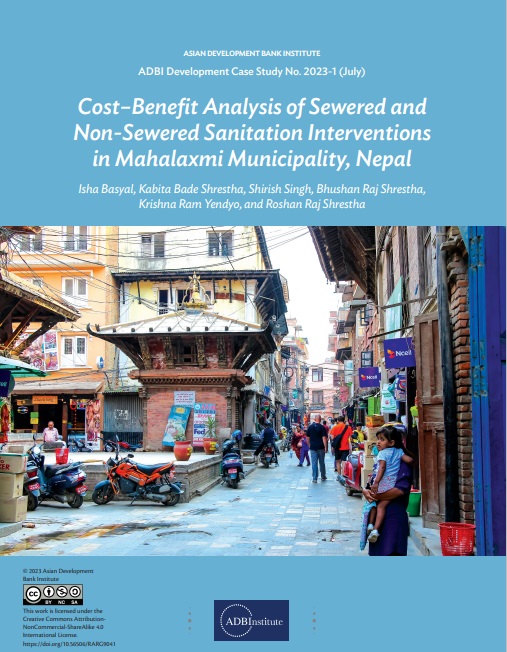Cost–Benefit Analysis of Sewered and Non-Sewered Sanitation Interventions in Mahalaxmi Municipality, Nepal
 |
rapport Jul 2023 ; 21 pages
Ed. ADB - Manila
Téléchargeable sous format: PdF
Téléchargeable chez l'éditeur
Abstract:
We focus on accessing the economic viability of various sanitation interventions through a cost–benefit analysis in the Mahalaxmi municipality of Nepal. The lack of affordable sewer-based sanitation systems in low- and middle-income countries poses a challenge to achieving Sustainable Development Goal 6.2 (safe sanitation). We examine three sanitation scenarios: 100% sewered sanitation, 100% non-sewered sanitation, and a hybrid scenario that combines both. We consider the perspectives of residents, the private sector, and the government. Estimated life-cycle costs, benefits (primarily reduced mortality and morbidity), and stakeholder roles are analyzed. The results provide evidence-based insights that facilitate decision-making for sanitation interventions in similar contexts. However, limitations include a focus solely on health benefits and a lack of detailed data on other potential benefits.
Mots clefs: |
accès à l'assainissement (CI) (DT) (OP) (ope) , assainissement (CI) (DT) (OP) (ope) |
Pays concerné: |
Editeur/Diffuseur: |
|
ADB
-
Asian Development Bank - Manila - Philippines |
En cas de lien brisé, nous le mentionner à communication@pseau.org